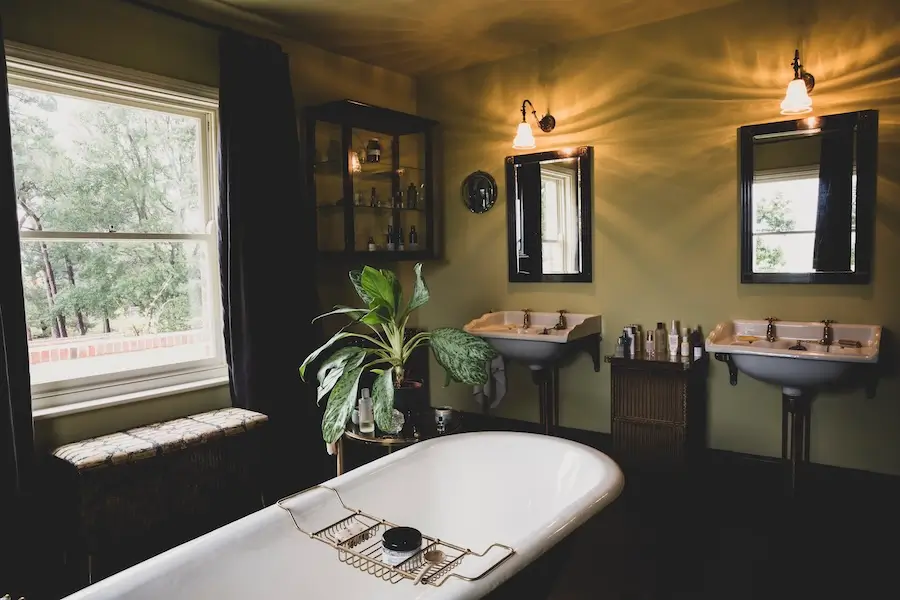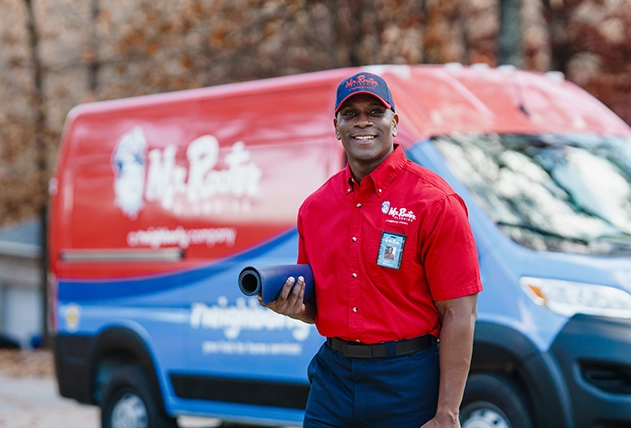
As magnificent as historic homes are with their character features and exquisite finishes, they aren’t without their flaws. Underneath those beautifully polished wood floors and behind the expertly applied lathe-and-plaster walls are some plumbing secrets that you’ll eventually need to uncover.
From old plumbing pipes that are ticking time bombs to clogged and cracked sewer lines, there are certainly plenty of old house plumbing issues to combat. If you own an older home or intend to, keep reading to discover the historic plumbing challenges you may face - and the available solutions.
Outdated Pipes
Historic homes were most often built with the best plumbing materials of the time. Unfortunately, we’ve since moved on from those ‘best’ plumbing materials after new, more reliable materials were developed.
Many older homes have galvanized steel, cast iron, and even lead pipes. These are all prone to corrosion, rust, and leaks, especially since it has been several decades since they were installed.
If your home was built in the early 1900s or even earlier and still has the original plumbing, your pipes will likely be made out of lead. While lead pipes can last over 100 years, the lead can leach into drinking water.
For homes built before the 1960s, your historic plumbing system may consist of cast-iron pipes. Over time, minerals in the water cause corrosion, and the now-rough pipe interiors contribute to clogs.
In properties built after the 1960s, galvanized steel pipes were popular for water delivery. Why are galvanized pipes a problem in older homes, you ask? They can last up to around 50 years, but as they age, they corrode and leak.
Copper pipes began to replace galvanized pipes in the 1960s and remained popular until around the 1990s, when more modern materials like PEX and PVC became commonplace. However, copper pipes are still installed in many new homes today because they are corrosion-resistant, durable, and have a lifespan of around 50-70 years.
Contact plumbers for old houses and ask for a home plumbing inspection. They will determine the type of pipes present in your historic home and provide helpful information on the upgrades you need to make.
Sewer Line Problems
Having an old home often means having an old sewer line. Aging cast-iron and clay sewer lines eventually crack and fail due to soil shifting, tree root intrusion, and general old age.
Many signs can indicate a problem with old sewer lines. Contact a trusted sewer line plumber if you notice the following:
- Slow drains
- Foul smells
- Sewage backups
- Mold growth
- Gurgling sounds from your drains
- Lush patches of grass in your yard
- Pest problems
- Visible cracking in the foundation
- Sinkholes in your yard
- Sinking pavers and driveways
Limited Access to Plumbing
You hope you’ll never have to see the pipes hidden beneath your floors or behind your walls, but sometimes, plumbing problems leave you no choice. In a modern home, uncovering and repairing pipes is usually straightforward, and new materials can patch damage without anyone noticing.
Accessing historic plumbing is often much more difficult, and restoring the home afterward can be equally challenging. Plumbing is often buried beneath ornate woodwork, original flooring, and lathe-and-plaster walls. Replicating the beautiful construction materials and methods from days gone by is rarely possible without it being noticeable.
Repairs Over the Decades
You likely won’t be the first person to touch the plumbing in a historic home. Former owners and occupiers may have made repairs and new installations at various points. While not always problematic, it can be. The use of incompatible materials in plumbing systems can cause weak spots. In the future, you may experience leaks, drain clogs, and other issues that require repair.
The good news is that replacing all your old plumbing pipes with new ones means you can start afresh with a plumbing system you trust.
Tips for Working on Historic Homes
If you have purchased a historic home and intend to complete renovations, updating the plumbing system is likely to be high on your list! While every home is different, you may find the following tips helpful:
Choose a Trusted Plumber
While you don’t necessarily have to research plumbers for old houses, choosing a knowledgeable plumber with experience working on old and new plumbing systems can be worthwhile. They can assist with everything from fixing plumbing leaks to helping with a complete bathroom and kitchen remodel. Their knowledge of old plumbing pipes can also mean they’re able to identify unsafe or incompatible materials and replace them with modern ones.
Perform a Comprehensive Plumbing Inspection
You know that buying a historic home means maintenance, but not always just how much maintenance. Whether you’re intending to buy an old house or already do, ask your local plumber to complete a full plumbing inspection.
They can use a range of tools and technologies, like video cameras and moisture meters, to inspect your plumbing and determine its condition.
Minimize Structural Damage
It’s not always possible to keep all parts of your home intact when fixing plumbing problems or installing new appliances. However, you should always aim to minimize structural damage where possible. In some situations, a skilled plumber can work within existing cavities or use clever techniques to avoid unnecessary cuts to walls and floors.
Choose Plumbing Materials Wisely
Experiencing historic home plumbing issues can mean needing to update materials, but to what? Review the pros and cons of modern plumbing materials so you can make the right choice for your home and needs.
For example, PEX piping is flexible and reasonably straightforward to retrofit without significant demolition. While copper is durable and likely suits the era of your home, it can often require more invasive installation methods because it’s more rigid and needs to be cut and soldered.
Contact Mr. Rooter Plumbing® for Historic Plumbing Advice
Dealing with old plumbing pipes can be a nightmare if you’re not experienced or knowledgeable. Whether you have plumbing issues or are completing a full renovation of your older home, contact the licensed and insured plumbers at Mr. Rooter Plumbing®.
Our experienced team can help with everything from fixing plumbing leaks and blockages to bathroom remodels, installing new pipes, and performing plumbing inspections. We’re available 24/7 to take your call.

